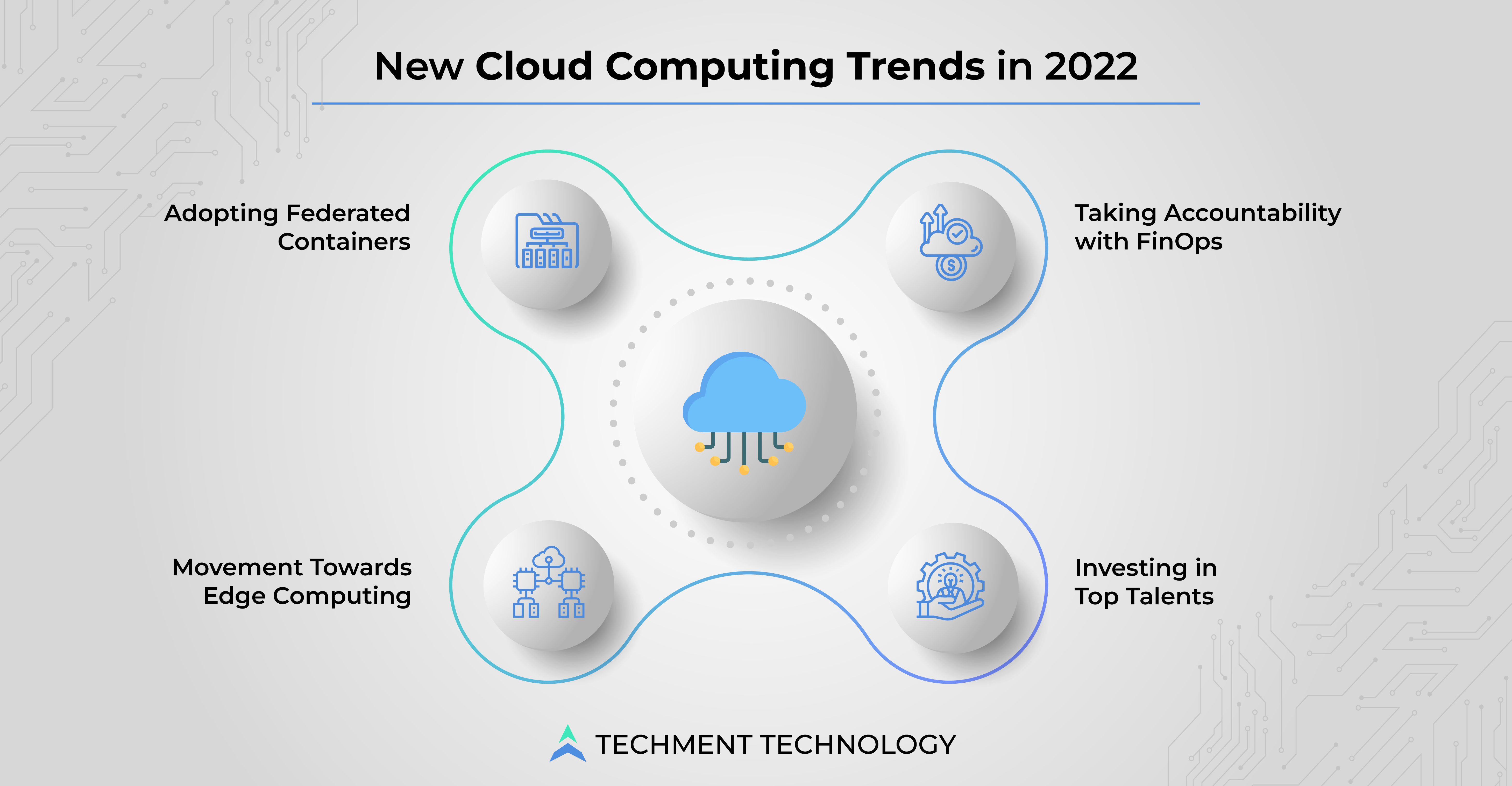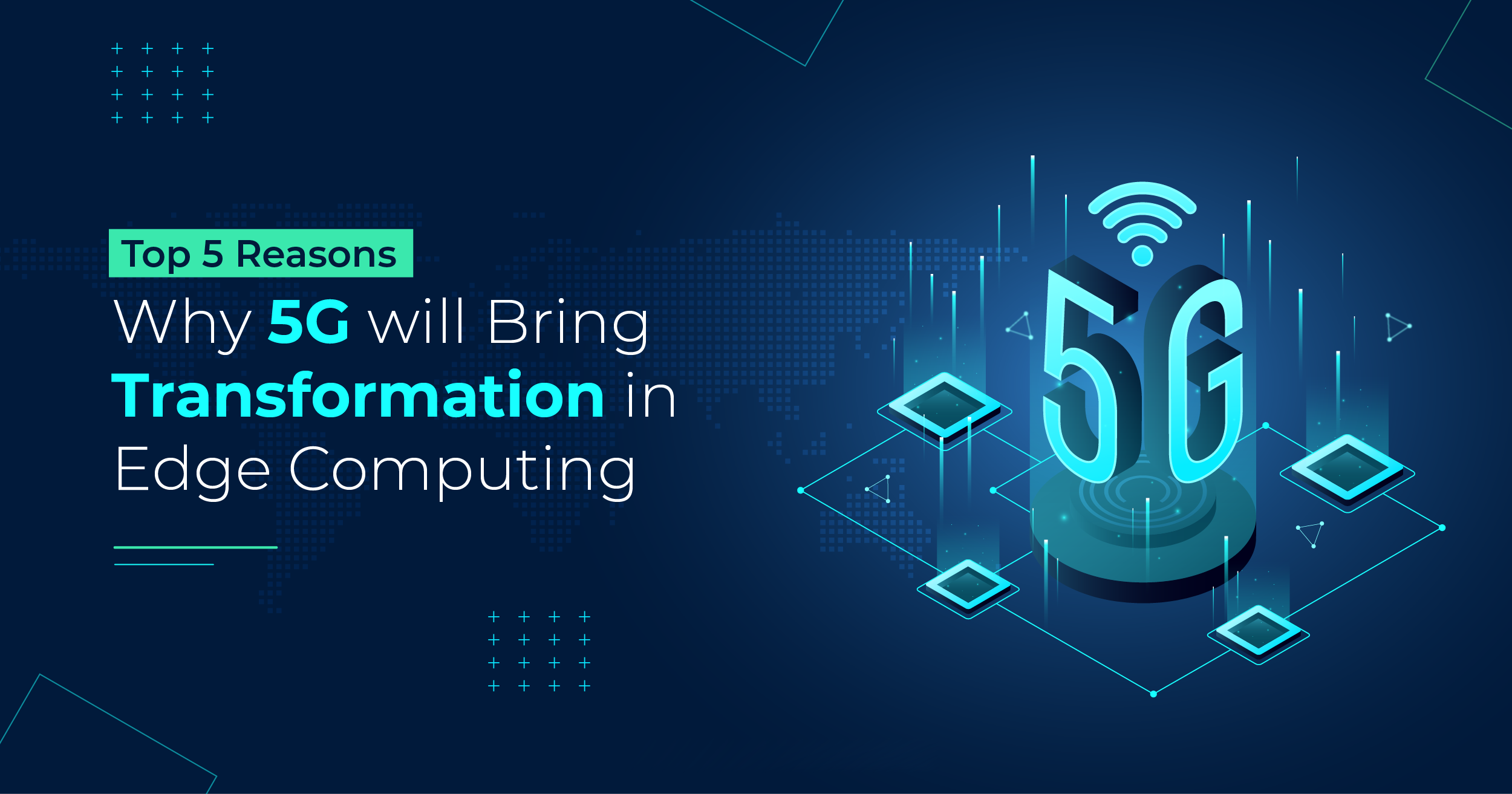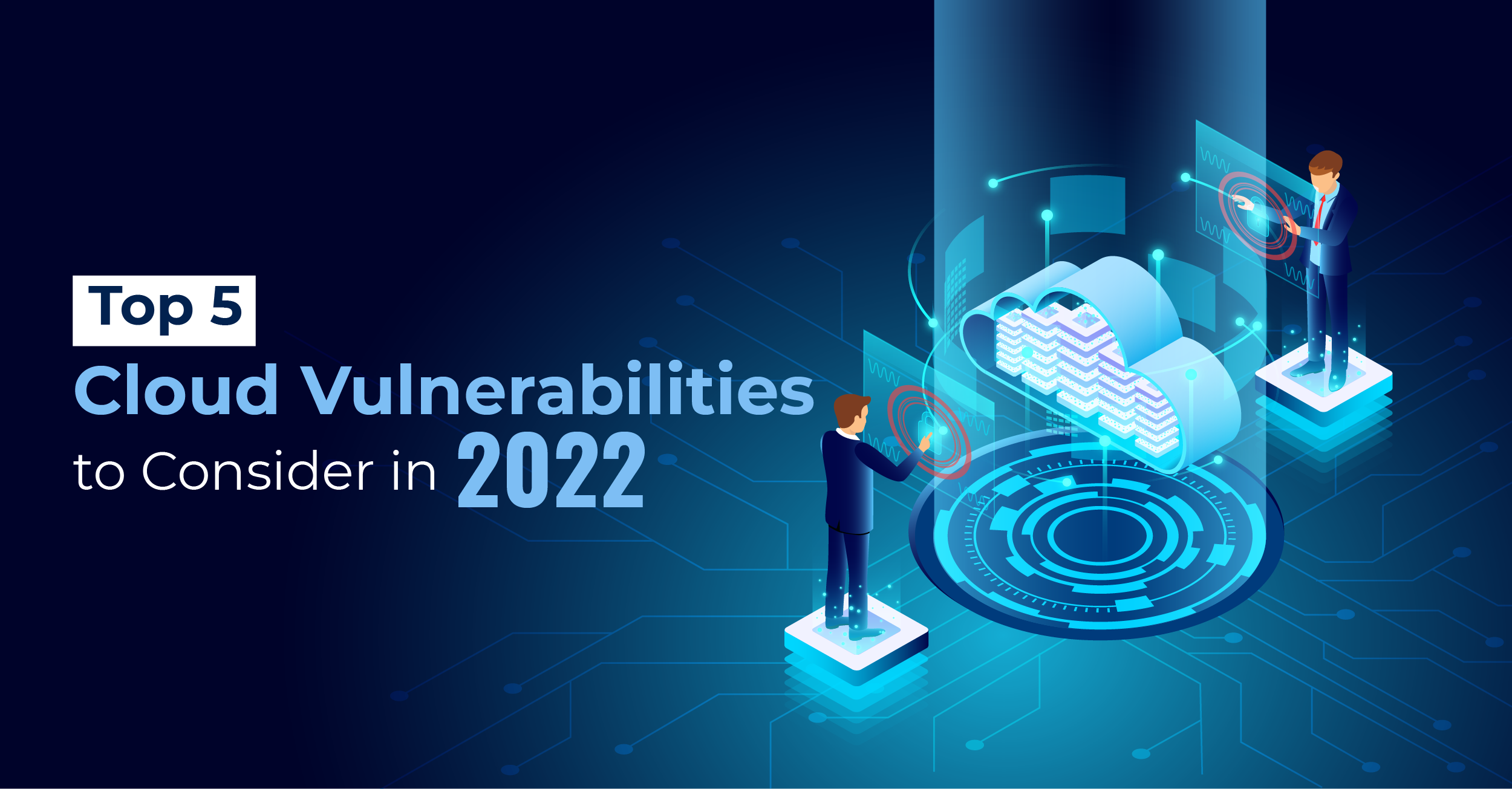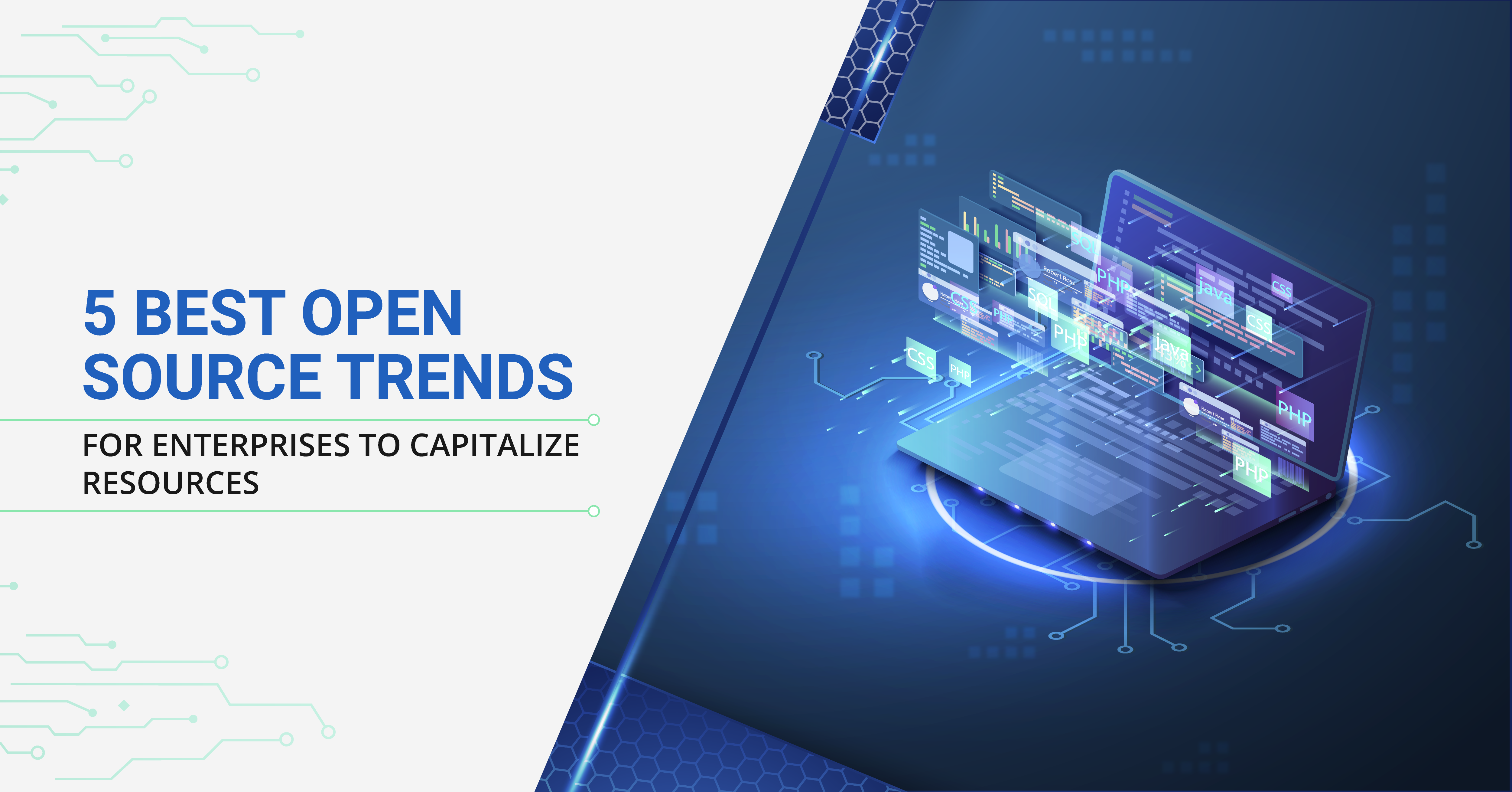The recent pandemic has transformed businesses in unprecedented ways. It has metamorphosed the way businesses operate and work. One of the major disruptions in recent times has been the Cloud. Undoubtedly, Cloud helps enterprises gain scalability, agility, earn better ROI, and achieve business goals.
Cloud has been an accelerator and driving force behind all digital-native imperatives like monolithic applications decoupled to microservices, API frameworks, etc. Infrastructure of massive scalable compute and storage systems was upscaled and the data management paradigm took a shift with cloud computing. But as the IT world is constantly evolving, new trends in cloud computing are coming into focus.
Here are some key findings about cloud computing from IDC:
Statistics About Worldwide Cloud computing in Future:
- By 2022, 70% of enterprises will integrate cloud management across their public and private clouds by deploying unified hybrid or multi cloud technologies, management tools, and processes
- By 2023, over 500 million digital apps and services will Be developed and deployed using cloud-native approaches.
- By 2023, the top 5 public cloud mega platforms will make Up at least 75% of market share.
- The Top 10 Pure-Play SaaS Vendors Will Generate an Average of Nearly 20% of Revenue from Expanding PaaS Solutions.
The tech service companies, and financial service companies, are the largest consumers of cloud technology in 2021, according to Flexera’s study. Hence, cloud adoption is becoming mainstream and needs to remain competitive in our ever-evolving digital world.
Several organizations are now moving to multi-cloud use as it provides ways to cover needs that a single cloud provider can’t. This requires automation and the incorporation of tools like artificial intelligence (AI) to simplify operation and troubleshooting.
Growing need for coordination between data centers and data users, more use of containers, need for faster data processing, etc. have made edge computing more important than ever and is considered the future of cloud computing. According to Statista, the global edge computing market size will reach $10.9 billion by 2024 (compared to $1.9 billion in 2018).
Other statistics from IDC’s survey about edge computing are here:
Edge computing in future:
- By 2023, over 50% of new enterprise IT infrastructure deployed will be at the edge rather than corporate data centers.
- By 2024, the Number of Apps at the Edge Will Increase 800%.
Distributed or edge computing landscape is rising more than ever since it is cost efficient and helps in meeting government regulations or mandates. This also helps eliminate network congestion, reduces latency, and guarantees the improved quality of services while managing applications, data, or users. This implies that cloud architectures like federated containers, involvement of top talents, and governing operations will provide courses for new cloud trends.
Let’s watch what we can expect in the cloud computing space in 2022 and beyond.
Evolution of New Cloud Computing Trends in 2022
In the hybrid IT world, where private, public, and hybrid cloud approaches continue to expand across all industry verticals, we will see new shifts like federated containers, FinOps, etc., gaining traction for migrating workloads and driving agility. To achieve maximum benefits, organizations will try to migrate by rightsizing, proper investing, and monitoring the complete metrics.
1.Movement Towards Edge Computing: As companies are becoming more data-driven, the demand for lower latency apps and services is growing. Hence, moving workload closer to digital interaction and data closer to users makes sense. This makes it flexible to access the distributed cloud, which supports edge computing while being centrally managed by a public cloud provider.
According to IDC, by 2023, over 50% of new enterprise IT infrastructure deployed will be at the edge rather than corporate data centers, and by 2024, the number of apps at the edge will increase 800%.
It’s not about centralizing computing but rather the ability to access the cloud instantly anytime anywhere with low latency.
2. Adopting Federated Containers: With the growth of applications, containerization has increased exponentially as companies increasingly become digital factories. The benefit it offers is that containers package and run an application and its dependencies in an isolated environment and quickly deploy and scale microservices easily. Hence, organizations use multiple container clusters, complicating streamlining the management process. The Kubernetes users can leverage this multi-cluster management by having a master configuration managed by a single API, a step further introduced by “Kubernetes Federation.”
This is especially useful in scaling an application across multiple data centers. Here, the application is packaged and deployed in the federation, where it benefits all cluster members by creating replicas across worker nodes.
3. Investing in Top Talents: Cloud has become the battleground for top talents, and companies need to align these three broad categories of skills:
- Engineers: Who would determine which cloud service will be consumed safely and reliably.
- Developers: Who would deliver innovative outcomes.
- Non-technical staff: Who would focus on enabling maximum cloud benefits and manage risk.
Organizations should address these talent shortfalls by balancing engineers with different maturity levels, sourcing strategies, and team composition.
- Talents with lesser experience in cloud strategies can still bring value by employing them in product delivery teams and working in agile development methods.
- Talents with more than 2 years of experience can be enrolled in automation, testing, and deployment pipelines.
- Having more than 5 years of experience, one can do security management, state management, connectivity, designs, etc.
This way, they can address talent gaps at different levels and develop a proficient cloud team.
4.Taking Accountability with FinOps: Managing cloud to get maximum business value by helping engineering, finance, technology, and business teams to collaborate on data-driven decisions. FinOps is one such evolving cultural practice and cloud financial management discipline to manage cloud cost and take ownership of cloud usage by the central best-practices group.
FinOps is the blend word of “Finance” & “DevOps,” which stresses communication and collaboration between business and engineering teams. This involves understanding the following domains:

In this digital world, latency has been a barrier in IT operations, and edge computing promises an exciting future. Combining cloud and the edge, the future seems to be more edge-native to reduce the bottleneck of latency in IT operation.
Cloud Needs Constant Modernization to Stay Ahead in Innovation
For more than a decade cloud has been a destination for most organizations’ data centers. This seemed like a fine model as far as it went but now the cloud has to be more flexible, resilient, and a lot more distributed than that. Reasons that now public or hybrid clouds aren’t enough are problems of latency, data residency and sovereignty, etc. So there needs to be more deployment options in architecting the cloud, which is a challenge as it is complex to deploy and manage.
Sending data in an already overloaded data warehouse can be time consuming, but with edge computing will provide less response time and processes data in real-time. Next-gen edge computing will support low-latency apps and is forging organizations to invest in distributed environments.
Containers, on the other hand, are making the cloud flexible & portable, and over time, container-as-a-service (CaaS) centralizes container configuration, management, and security. In the future, open source will become the lifeblood of innovation in cloud computing and will make the cloud ubiquitous.
Hence, the cloud is something that requires constant modernization. It is vital for organizations to make the cloud more resilient and to support cloud-native ecosystems.
If you haven’t started your cloud journey yet, or are heading towards cloud migration, don’t hesitate to take our free consultation.
 All Posts
All Posts


